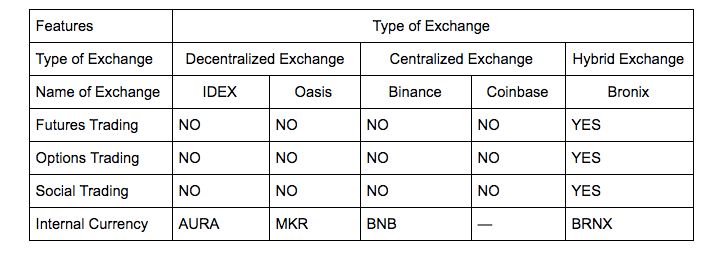Latest news about Bitcoin and all cryptocurrencies. Your daily crypto news habit.
In comparison to the traditional market, the number of cryptocurrency exchanges is now far greater than the traditional exchanges. Not all of them offer services that warrant the creation of a separate exchange. After the emergence of the decentralized exchange (like Idex and Oasis), the gauntlet had been thrown by the crypto-verse. With minimal interference in the form of KYCs and long-drawn sign-ups processes, these decentralized exchanges were the natural outcome of the decentralized movement.
Decentralized Exchanges
While liquidity on such decentralized exchanges grew, the gaze of the regulatory authorities also became keener. With over a billion dollar daily transaction value, these decentralized exchanges were no longer the outliers but had grown into full fledged mainstream exchanges. Some exchanges thought it pertinent to become centralized, follow the diktats of the regulatory authorities, and employ best practices to protect the funds stored in their users’ trading accounts.
What decentralized exchanges lack in terms of liquidity, they make up for it in terms of security. With a sufficiently distributed arrangement of nodes, these exchanges are practically hack-proof. 51% attacks which were once considered practically impossible have begun to occur with disquieting regularity. To overcome such attacks, traders must liquidate their trading accounts by transferring their balance to their personal wallets. This simple step will disincentive the hackers from attempting to
Centralized Exchanges
While centralized exchanges such as Coinbase mimicked some of the features of the traditional and highly secure exchanges of traditional equities and other products of the capital market, they fell terribly short of the core safety features. The fact that Bithumb, the largest Crypto-exchange of South Korea got hacked in 2018 because it kept funds in a “hot-wallet” speaks volumes about the security protocols of such exchanges.
To put things in perspective, hackers walked away with $31 million after the Bithumb hack. The biggest hack ever in a traditional bank cost $30 million. This shows the magnitude of problems that a centralized exchange faces.
Hybrid Exchanges
Such issues, attributed mostly to the architecture of the exchange and the lack of oversight have led to the development of another category of crypto-exchanges, the hybrid exchange. These exchanges are a combination of a centralized and a decentralized exchange. This offers the flexibility of a centralized exchange and the security of a decentralized exchange.
A hybrid exchange such as Bronix offers the full suite of trading avenues such as margin trading, futures trading, and options trading. Those traders who want to access this full suite of trading avenues must perform mandatory KYC while others who just want to trade in small values do not need to perform KYC.
Comparison of the Top Cryptocurrency Exchanges
Conclusion
It looks clear that as the public interest in cryptocurrencies rises, the demand for more sophisticated and advanced products will also increase. Today, the Futures and Options trading is being fleshed out, but tomorrow, these will be the key drivers of the valuation of BTC, ETH, and the other altcoins.
The Evolution of Crypto-Exchanges was originally published in Hacker Noon on Medium, where people are continuing the conversation by highlighting and responding to this story.
Disclaimer
The views and opinions expressed in this article are solely those of the authors and do not reflect the views of Bitcoin Insider. Every investment and trading move involves risk - this is especially true for cryptocurrencies given their volatility. We strongly advise our readers to conduct their own research when making a decision.

